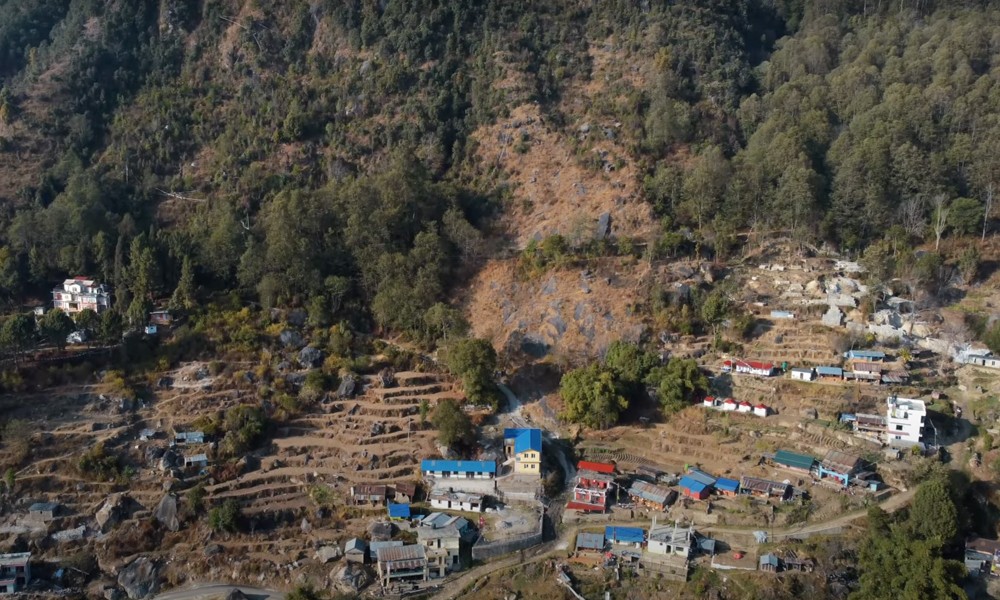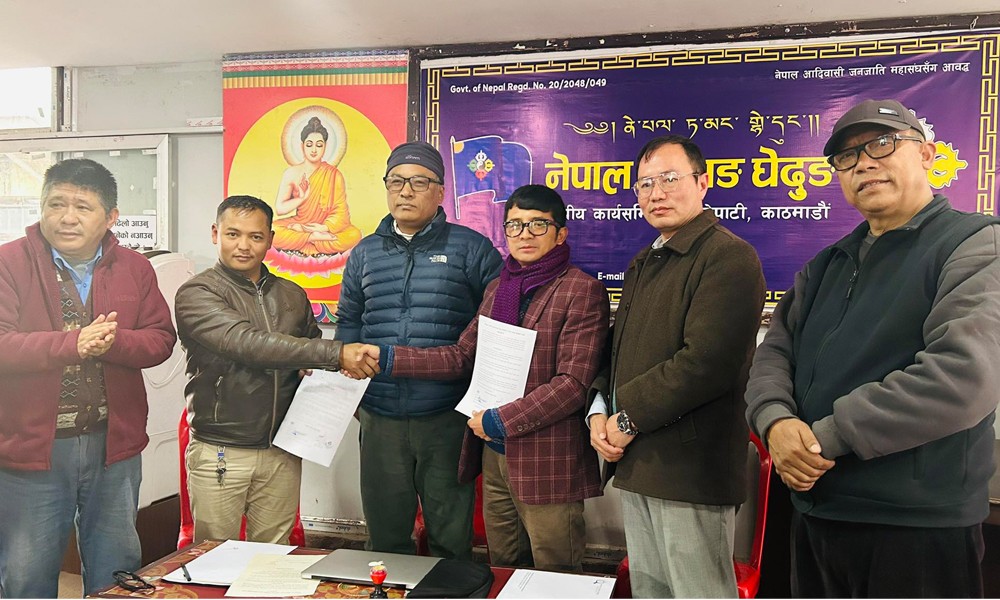The construction of Nagamani Dhap reservoir came like a bolt from the blue to Deepak Tamang, a resident of the construction site. “The park authority did not even bother to ask the landowners if they would allow them to build a reservoir in their neighborhood," says Deepak, distressed by the highhandedness of the National Park Authority towards the indigenous population.
Shivapuri Nagarjun National Park is the recently announced protected area of the country’s capital city. The area is populated by the Tamang, an indigenous community. Ever since the government declared the area a national park in 2002, the park has been confiscating the land from the Tamang population without their consent, let alone prior consent as directed by the ILO convention.
Just a few weeks ago, Tamang residents of Okhreni, Mulkharka, Tarebhir, Chisapani, Gagalphedi, and Manjushree villages gathered at Sundarijal to organise a protest rally. Demanding the national park be friendly towards the public.
Just a few weeks ago, Tamang residents of Okhreni, Mulkharka, Tarebhir, Chisapani, Gagalphedi, and Manjushree villages gathered at Sundarijal to organise a protest rally. Demanding the national park be friendly towards the public.
Local residents have formed the Shivapuri Nagarjun National Park Affected Struggle Committee under the coordination of Deepak Tamang. The committee organised a press conference in Kathmandu a few days ago to gather information and coordinate with the indigenous people. The committee demands the cancellation of projects such as the ticket counters operated by National Park, the immediate termination of illegal activities like encroachment, deforestation, threats, and harassment in the park, and the retrieval of the ancestral lands, territories, and resources seized by the government in the surrounding areas of national park and the buffer zone.
According to Deepak Tamang, the coordinator of the Struggle Committee, the program includes shutting down military check posts and restrictions in the surrounding areas declared by National Park, seeking the return of the ancestral lands, territories, and resources taken over by the government, and protesting against the illogical actions carried out by National Park.
Introduction to Shivapuri Nagarjun National Park:
Established in 2002, Shivapuri Nagarjun National Park is located near the capital city of Kathmandu. It is situated approximately 12 kilometers north of the administrative headquarters in Singha Durbar. The park covers an area of 159 square kilometers. This national park is spread across the hilly region and aims to preserve the ecological diversity of the mid-hill region while providing a sustainable water supply to the Kathmandu Valley.
For the security and conservation purposes of Shivapuri Nagarjun National Park, the Nepal Army has been deployed in significant numbers within the park. There is a military checkpoint at the main entrance of several villages inside the national park. Residents who traditionally reside inside national parks find it challenging to access their homes due to military checkpoints, leading to issues such as encroachment, search operations, and harassment by the army.
The national park is considered a pilgrimage site for Buddhists. However, the residents of national park face restrictions on hunting, building houses for residence or shelters, keeping livestock, cultivating land, or even planting trees.
Within the national park, there are culturally significant areas and religious sites for the indigenous people. Notable among them are Nagi Gumba, Sitre, Baghdhar, Chisapani, and Jamacho. The national park is considered a pilgrimage site for Buddhists. However, the residents of national park face restrictions on hunting, building houses for residence or shelters, keeping livestock, cultivating land, or even planting trees. The park authorities have imposed regulations that hinder the residents from basic activities like cleaning, farming, or even constructing fences.
Within the National Park, engaging in activities such as tree cutting, excavation, removal, plucking, or harming living beings is strictly prohibited. Similarly, extracting soil, sand, clay, stones, or any other materials is not permitted. Carrying weapons, valuables, or poison inside is also strictly prohibited. Violating these regulations can result in severe penalties, including fines ranging from fifty thousand to one hundred thousand rupees and imprisonment for up to fifteen years.
Historical background of Shivapuri Nagarjun National Park:
The land on which Shivapuri Nagarjun National Park is situated holds traditional significance for the indigenous people. In the past, the Tamang community had established traditional laws that honored and conserved the forests, following their own customary practices. They held trees, plants, and knowledge in high regard, prioritizing them over materialistic beliefs. Their lifestyle involved the traditional collection of fuel wood, herbs, and spiritual practices, fostering a sustainable relationship with the nearby city for their livelihood.
Indigenous individuals used to collect and transport firewood, pasture, and medicinal herbs from the forest to the city. To achieve this, they engaged in the traditional gathering of dried leaves, grass, and herbs. Additionally, they gathered products such as nuts, spinach, and yam for preparing food items. The indigenous people regarded the forest as a sacred place and utilized its resources for their daily needs.
Traditional practices encompassed the collection of resin, grass, and wood from the forest. They also gathered edible items like nuts, spinach, and yams for consumption. The indigenous community held a deep respect for the jungle, worshiping specific locations within it as sacred sites. The traditional collection of herbs and grass was regarded as a divine act.
However, over time, the government took measures to declare the forest a national park, leading to a transformation in the traditional way of life for the indigenous people.
· 1976, the Shivapuri Watershed Conservation Board was formed, and a survey was conducted.
· 1978, the Shivapuri Watershed Protected Area was established.
· 1984, the declaration of Shivapuri Watershed and Wildlife Reserve was made.
· 2002, Shivapuri was declared a National Park. In 2009, Nagarjun Forest was also included, and the name was changed to Shivapuri Nagarjun National Park.










